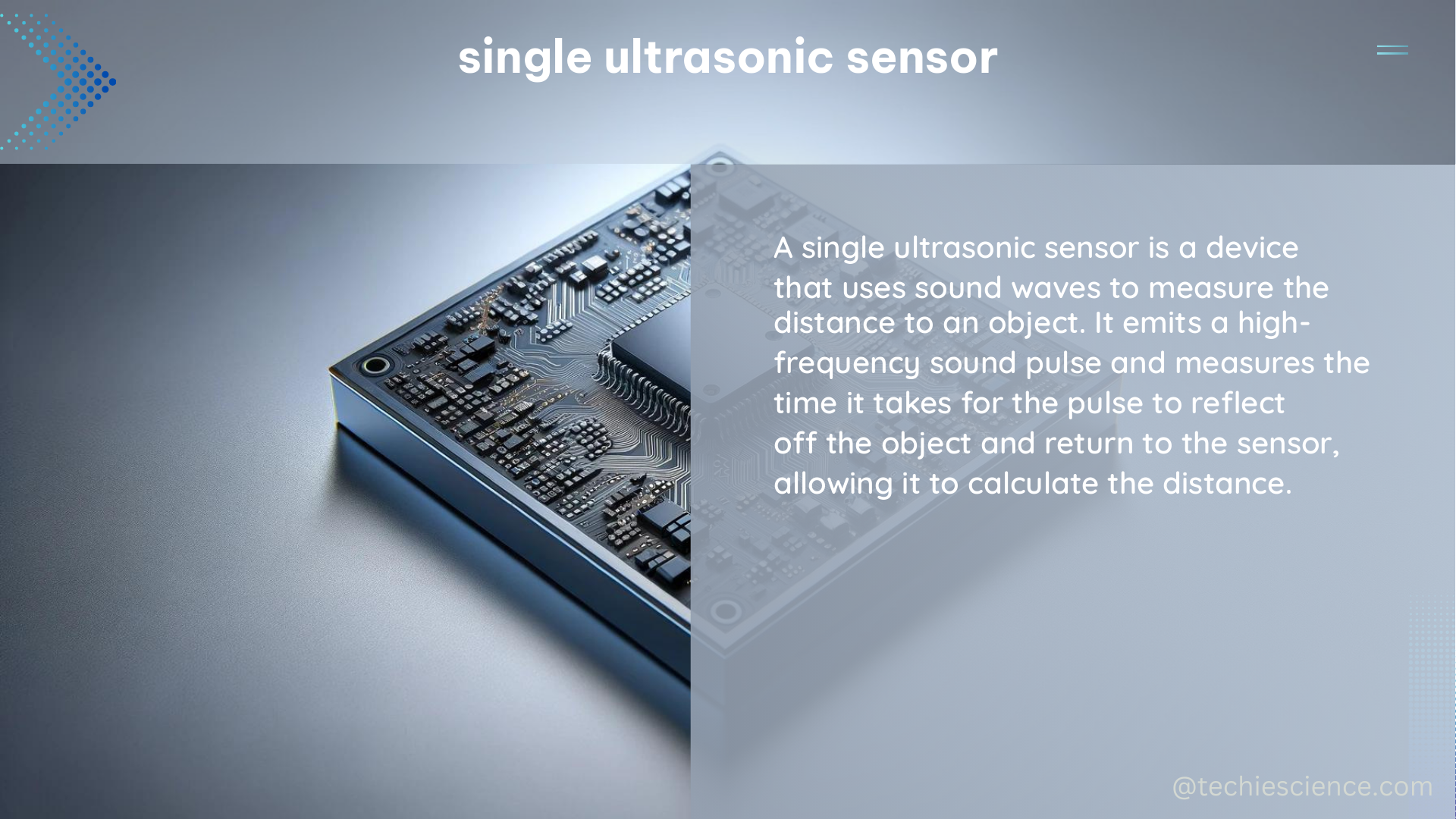The single ultrasonic sensor, such as the JSN-SR04T, is a versatile and accurate tool for distance measurement applications. These sensors work by emitting an ultrasonic wave and measuring the time it takes for the wave to return after hitting an object, which can then be converted into a distance measurement. With a measurable distance range of 2cm to 400cm and an accuracy of ±1cm, the JSN-SR04T sensor is well-suited for a variety of applications, from robotics and automation to home security and smart home systems.
Understanding the Technical Specifications
The JSN-SR04T sensor has a range of technical specifications that make it a popular choice for distance measurement applications:
- Measurable Distance Range: The sensor can measure distances from 2cm to 400cm, making it suitable for a wide range of applications.
- Accuracy: The sensor has an accuracy of ±1cm, ensuring reliable and precise distance measurements.
- Trigger Input and Echo Output: The sensor has a trigger input and an echo output, which can be connected to a microcontroller or other digital input/output pins. The trigger input is used to initiate the ultrasonic wave emission, and the echo output provides the time duration of the received wave.
- Response Time: The sensor has a response time of 60ms, which is the time it takes for the sensor to provide a distance measurement.
- Maximum Output Frequency: The sensor has a maximum output frequency of 40kHz, which is the frequency at which the ultrasonic wave is emitted.
Factors Affecting Sensor Performance

When using the JSN-SR04T sensor, it is important to consider the potential sources of error that can affect the accuracy of the distance measurements. These include:
- Echoes from Surrounding Objects or Surfaces: Echoes from nearby objects or surfaces can cause false readings and lead to inaccurate distance measurements. To mitigate this issue, it is recommended to adjust the time between pings and find the “sweet spot” for the sensor.
- Surface Composition and Orientation: The composition and orientation of the surfaces being measured can have a significant impact on the quality of the echo. Hard, flat surfaces provide optimal returns, while jumbled or irregular surfaces can lead to false readings.
- Environmental Conditions: Environmental factors such as temperature, humidity, and air pressure can also affect the performance of the ultrasonic sensor. It is important to consider these factors when using the sensor in different environments.
Optimizing Sensor Performance
To ensure accurate and reliable distance measurements with the JSN-SR04T sensor, it is important to follow these best practices:
- Adjust the Time Between Pings: Experiment with the time between pings to find the “sweet spot” for the sensor, which can help reduce the impact of echoes from surrounding objects or surfaces.
- Optimize Surface Composition and Orientation: Position the sensor and the target surface in a way that maximizes the quality of the echo, such as using hard, flat surfaces and avoiding irregular or jumbled surfaces.
- Monitor Environmental Conditions: Keep track of environmental factors such as temperature, humidity, and air pressure, and adjust the sensor’s settings or calibration as needed to account for these changes.
- Implement Filtering and Averaging Techniques: Use digital signal processing techniques, such as filtering and averaging, to smooth out the sensor’s output and reduce the impact of noise or interference.
- Regularly Calibrate the Sensor: Periodically calibrate the sensor to ensure that it is providing accurate distance measurements, especially if the environmental conditions or the target surfaces have changed.
Applications and Use Cases
The JSN-SR04T single ultrasonic sensor has a wide range of applications, including:
- Robotics and Automation: The sensor can be used for obstacle detection, navigation, and proximity sensing in robotic systems.
- Home Security and Smart Home Systems: The sensor can be used for motion detection, intruder alerts, and automated lighting or appliance control.
- Industrial Automation: The sensor can be used for level monitoring, object detection, and process control in industrial environments.
- Automotive Applications: The sensor can be used for parking assistance, blind spot detection, and collision avoidance in vehicles.
- Agriculture and Environmental Monitoring: The sensor can be used for water level monitoring, crop monitoring, and weather data collection.
Conclusion
The single ultrasonic sensor, such as the JSN-SR04T, is a powerful and versatile tool for distance measurement applications. By understanding the sensor’s technical specifications, factors affecting its performance, and best practices for optimization, users can leverage the sensor’s capabilities to create innovative and effective solutions in a wide range of industries. Whether you’re working on a robotics project, a smart home system, or an industrial automation solution, the single ultrasonic sensor can be a valuable asset in your toolkit.
References
- Distance Measurement Using Ultrasonic Sensor Arduino
- Measuring within a Range Ultrasonic Sensors
- Ultrasonic Sensor Giving Odd Readings
- Arduino Tutorial: Ultrasonic Sensor
- Ultrasonic Sensor HC-SR04 Working and Connection with Arduino
- JSN-SR04T Ultrasonic Sensor

The lambdageeks.com Core SME Team is a group of experienced subject matter experts from diverse scientific and technical fields including Physics, Chemistry, Technology,Electronics & Electrical Engineering, Automotive, Mechanical Engineering. Our team collaborates to create high-quality, well-researched articles on a wide range of science and technology topics for the lambdageeks.com website.
All Our Senior SME are having more than 7 Years of experience in the respective fields . They are either Working Industry Professionals or assocaited With different Universities. Refer Our Authors Page to get to know About our Core SMEs.